Intel Performance Maximizer (IPM) Tested: One-Click Overclocking Comes to 9th-Gen CPUs
Rendering, Encoding and Compression
Rendering
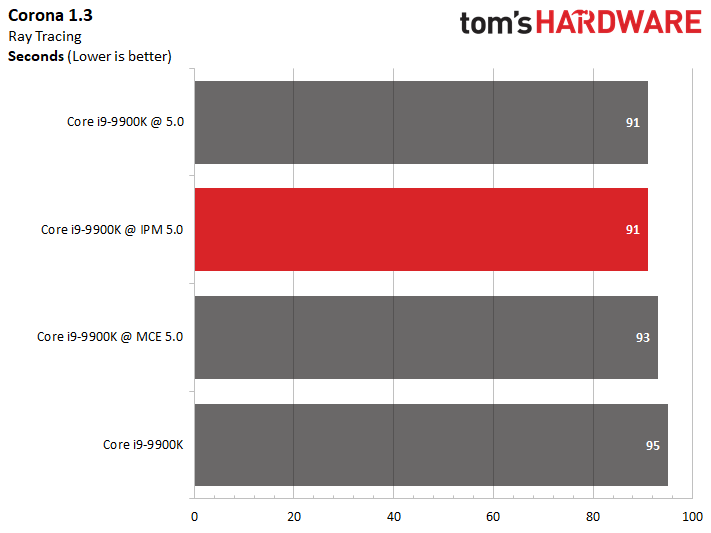
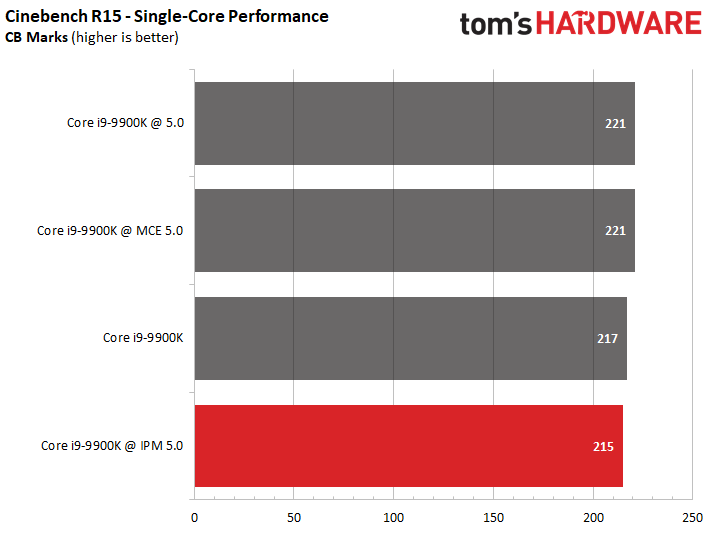
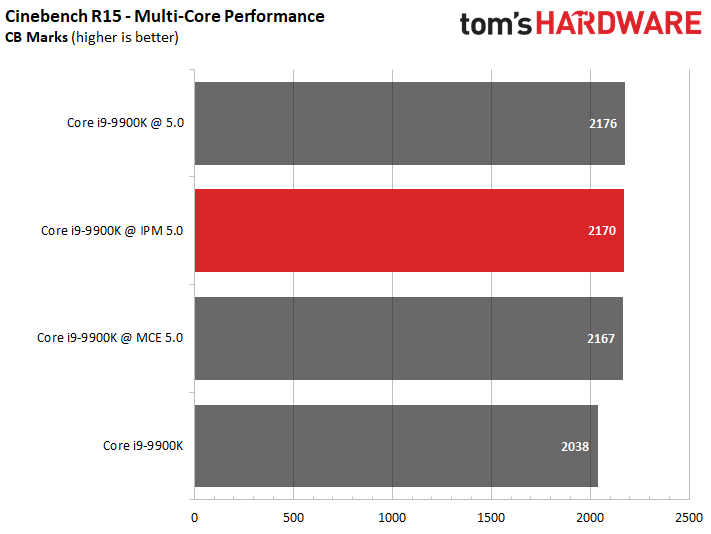
Loading the cores up with the heavily-threaded Corona benchmark exposes a tie between the manually overclocked and IPM configurations. The 4% increase over the stock configuration isn't incredibly impressive, but we are only dealing with an additional 300 MHz boost to all-core performance. We see a larger improvement of ~7% during the multi-threaded Cinebench test.
Our single-core Cinbench test exposed an odd errata with the IPM-imposed 5.0 GHz overclock. During this test, our Core i9-9900K fell below both its 5.0 GHz all-core overclock to 4.8 / 4.7 GHz, and the issue is repeatable. It's hard to pin the issue on the software. It could just as easily be an issue with the motherboard firmware, but we've followed up with Intel for more information. We're working to identify the issue and will update as necessary.
Encoding and Compression
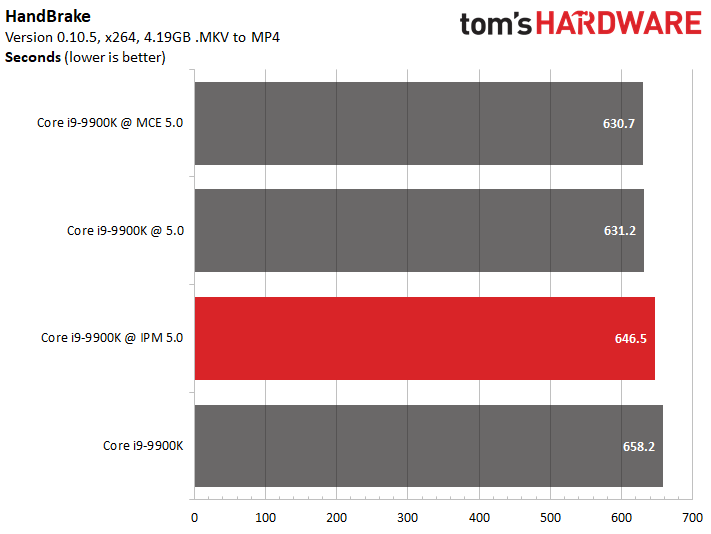
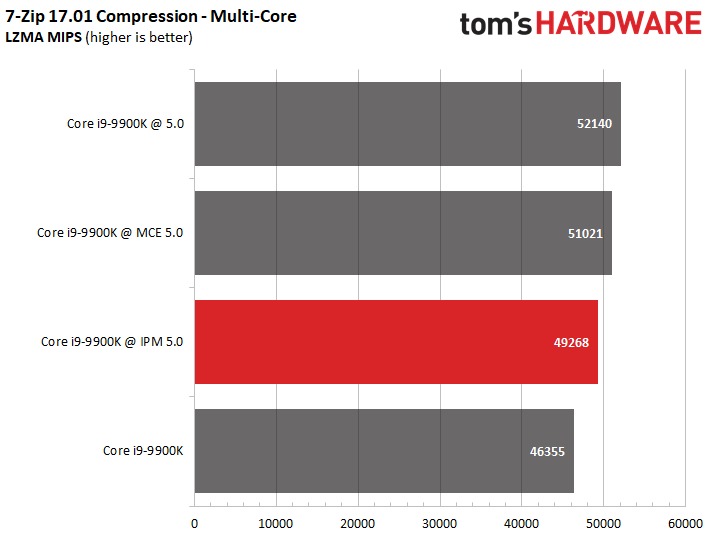
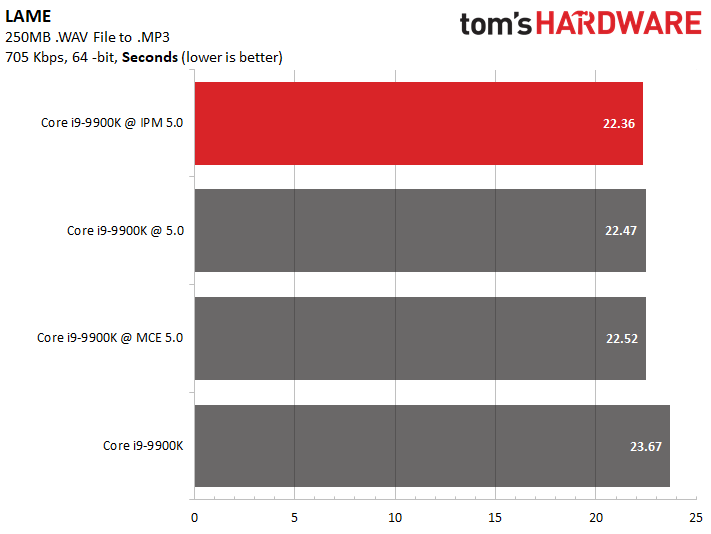
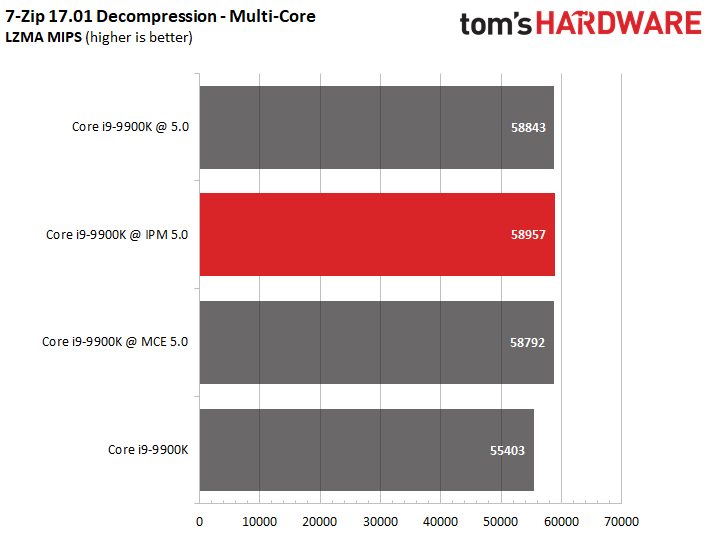
The IPM configuration trailed the MCE and manually-overclocked configurations during the HandBrake test by 2.45%. Those configurations also outstripped the IPM system during the compression workload. The auto-overclocked system redeemed itself in the decompression and lightly-threaded LAME workload, but the delta fell within the expected standard run-to-run variation for this test.
Y-Cruncher
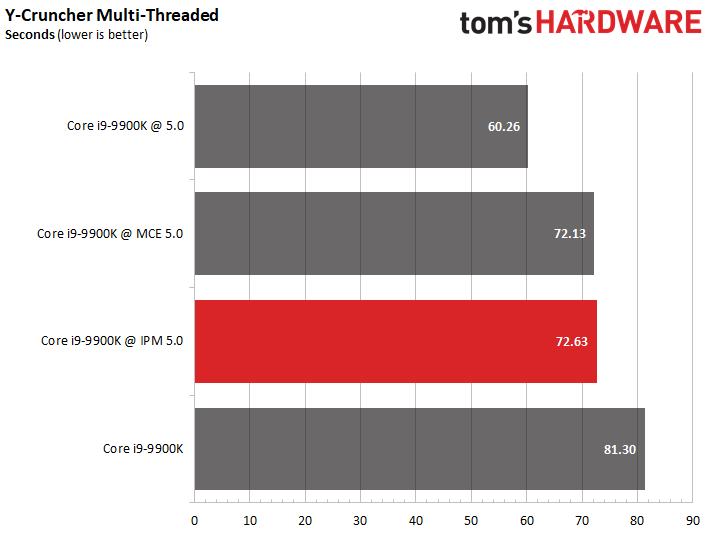
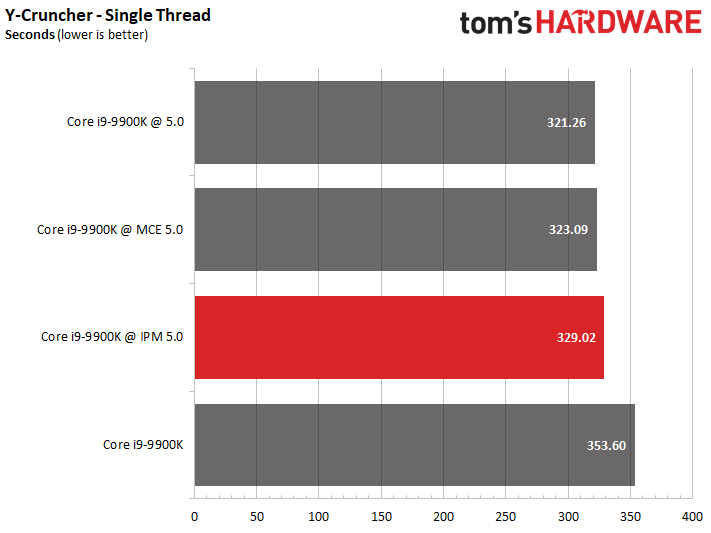
Y-cruncher, a single- and multi-threaded program that computes pi, is a great test to use for measuring the affect of AVX instructions. It also exposes the main advantage of manual tuning: The potential for higher frequencies during AVX-enabled workloads.
Our manually overclocked configuration stays at the same 5.0 GHz all-core frequency during the multi-threaded y-cruncher test while the IPM and MCE configurations downshift to 4.7 GHz via the AVX offset. That hands the manually overclocked system a 19.6% advantage during the test.
All three overclocked systems score within the expected variance during the single-thread y-cruncher test.
MORE: Best CPUs
Get Tom's Hardware's best news and in-depth reviews, straight to your inbox.
MORE: Intel & AMD Processor Hierarchy
MORE: All CPUs Content
Current page: Rendering, Encoding and Compression
Prev Page Far Cry 5, GTA: V and Hitman Next Page Final Thoughts
Paul Alcorn is the Editor-in-Chief for Tom's Hardware US. He also writes news and reviews on CPUs, storage, and enterprise hardware.
-
mdd1963 Here, take this Intel provided software, use it, it's great but....BUT,....if you use it, and overclock , and kill your processor, well, it was 'inherently dangerous'...your bad! :) (Better luck with your $500 next time!) :)Reply
Granted, Intel's XTU is not 'one click and done', but, I thought it would be hard to get too much easier (I think it took 5-6 clicks?)....
I see it's now easier.. :) -
AgentLozen Replyrgd1101 said:what the 1.5GB download get?
Hopefully the 100MB of overclocking software comes bundled with an installation of Warcraft III. That's about how much space its demanding. -
jimmysmitty Replyrgd1101 said:compare the power consumption and temp?
Yea that would be nice to see how it handles power and temps compared to MCE or manual overclocking.
I never have trusted auto OCing utilities, even in motherboards, as they tend to go on the high side of CPU voltage. -
King_V I wonder if this is smacking a little of desperation. These CPUs are already blowing past their TDP now that Intel has decided that base-speed TDP is more convenient for them that maximum power.Reply
Maybe they can't really claim a huge gaming lead anymore, and are trying to push through whatever boost they can, to try and keep an edge?
In this case, both in performance, and as a convenient space-heater. -
gdmaclew It's a useful utility, but it needs this, but it only supports that, but you have to remove this other thing. Typical for Intel.Reply -
joeblowsmynose Well I guess this free utility makes the 9900KS obsolete -- hasn't even launched yet! lol!Reply
Maybe they figured the suckers that would buy the insurance for the IPM would offset the markup on the 9900ks? Intel makes no sense at all ... literally none ... I can't wait for the 3900x to launch so I can give AMD more money. -
joeblowsmynose ReplyKing_V said:I wonder if this is smacking a little of desperation. These CPUs are already blowing past their TDP now that Intel has decided that base-speed TDP is more convenient for them that maximum power.
Maybe they can't really claim a huge gaming lead anymore, and are trying to push through whatever boost they can, to try and keep an edge?
In this case, both in performance, and as a convenient space-heater.
Massive power draws are only a major concern when AMD has it. When Intel has it, it just means cause its better. Don't you know the logic? ;)